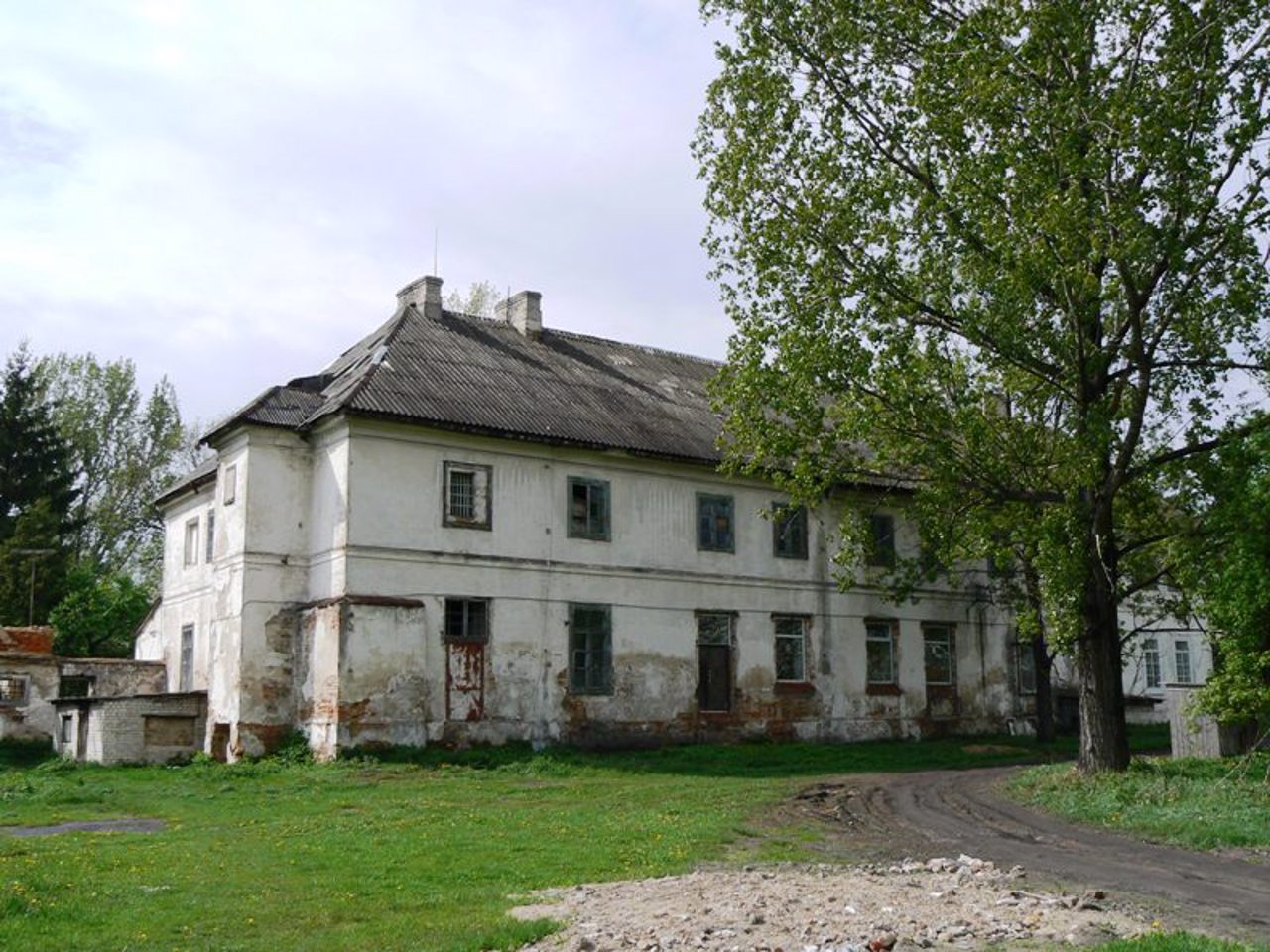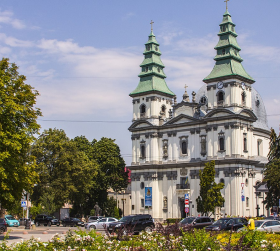Functional temporarily unavailable
Branytsky Palace, Liuboml
Palace / manor
Architecture
General information about Branytsky Palace (Liuboml)
The only surviving wing of the palace built in Liuboml by Count Frantsysk Ksaveriy Branytsky, after he received these lands in 1768 as a reward for saving the life of the future King of Poland, Stanislav Avhust Ponyatovsky, at a session of the Sejm in 1762.
In 1782, he completed the construction of his residence in Liuboml, next to Castle Hill. It was a large palace complex consisting of the main palace building, a pair of two-story outbuildings, and a one-story gallery with a winter garden. A large garden surrounded by a stone fence was laid to the north of the palace.
At the end of the 18th century, after the uprising of Tadeush Kostyushko, as a result of which the crown hetman Branytsky was recognized as a traitor, he and his wife Oleksandra left Lyuboml and moved to Bila ...
The only surviving wing of the palace built in Liuboml by Count Frantsysk Ksaveriy Branytsky, after he received these lands in 1768 as a reward for saving the life of the future King of Poland, Stanislav Avhust Ponyatovsky, at a session of the Sejm in 1762.
In 1782, he completed the construction of his residence in Liuboml, next to Castle Hill. It was a large palace complex consisting of the main palace building, a pair of two-story outbuildings, and a one-story gallery with a winter garden. A large garden surrounded by a stone fence was laid to the north of the palace.
At the end of the 18th century, after the uprising of Tadeush Kostyushko, as a result of which the crown hetman Branytsky was recognized as a traitor, he and his wife Oleksandra left Lyuboml and moved to Bila Tserkva, where they built the famous Oleksandriya Park.
The last owner of the palace in Liuboml was the family of landowners Kappioni.
During the Soviet rule, the building was in the hands of the military and was partially dismantled. A children's and youth sports school is located in the wing.
Збергіся єдиний флігель палацу, збудованого в Любомлі графом Франциском Ксаверієм Браницьким, після того, як у 1768 році він отримав ці землі в нагороду за врятоване на сеймовому засіданні 1762 року життя майбутнього короля Польщі Станіслава Августа Понятовського.
У 1782 році Браницький закінчив будівництво своєї резиденції в Любомлі, поруч із Замковою горою. Це був великий палацовий комплекс, що складався з головної будівлі палацу, пари двоповерхових флігелів та одноповерхової галереї із зимовим садом. На північ від палацу було закладено великий сад, обнесений кам'яною огорожею.
В кінці XVIII століття, після повстання Костюшка, в результаті якого коронного гетьмана Браницького визнали зрадником, він із дружиною Олександрою покинули Любомль та переїхали до Білої Церкви, ...
Збергіся єдиний флігель палацу, збудованого в Любомлі графом Франциском Ксаверієм Браницьким, після того, як у 1768 році він отримав ці землі в нагороду за врятоване на сеймовому засіданні 1762 року життя майбутнього короля Польщі Станіслава Августа Понятовського.
У 1782 році Браницький закінчив будівництво своєї резиденції в Любомлі, поруч із Замковою горою. Це був великий палацовий комплекс, що складався з головної будівлі палацу, пари двоповерхових флігелів та одноповерхової галереї із зимовим садом. На північ від палацу було закладено великий сад, обнесений кам'яною огорожею.
В кінці XVIII століття, після повстання Костюшка, в результаті якого коронного гетьмана Браницького визнали зрадником, він із дружиною Олександрою покинули Любомль та переїхали до Білої Церкви, де ними було збудовано знаменитий парк "Олександрія".
Останньою власницею палацу в Любомлі була родина землевласників Каппіоні.
За радянської влади будинок опинився у віданні військових, був частково розібраний. У флігелі розміщена дитячо-юнацька спортивна школа.
Practical information about Branytsky Palace (Liuboml)
Last update
4/11/2025
| Categories | Palace / manor, Architecture |
|---|---|
| Date of foundation | 1782 |
| Address |
1 Travnya Street, 1
Liuboml |
| Coordinates |
51.2256° N, 24.0438° E
|
| Phone | +380 3377 24 499, |
| Additional services |
Аccessibility information
Have you visited Branytsky Palace in Liuboml?
Add practical or descriptive information, photos, links
What to see, where to go next?





